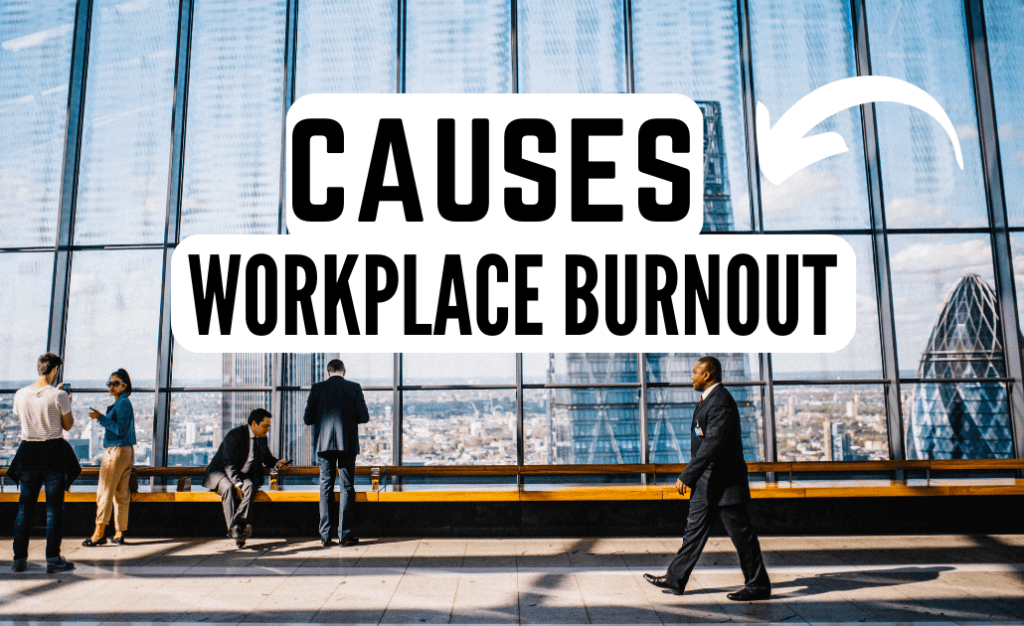Burnout: Discovering the 7 Causes of Work-Related Stress and Fatigue
Do You Feel Burned-Out?
Workplace burnout is an insidious phenomenon that affects countless individuals across industries, leading to decreased productivity, physical and mental exhaustion, and a general sense of disillusionment.
This article delves deep into the underlying causes of workplace burnout, shedding light on the factors that contribute to this pervasive issue.
By understanding these causes, individuals and organizations can proactively address and mitigate burnout, fostering a healthier and more productive work environment.
Table of Contents
High Workload and Unrealistic Expectations
One of the primary causes of burnout is an excessive workload combined with unrealistic expectations.
When employees are constantly faced with overwhelming tasks and tight deadlines, it can lead to chronic stress and a feeling of never being able to catch up.
Employers need to set realistic goals, prioritize tasks, and ensure proper resource allocation to prevent employees from feeling overwhelmed.
Lack of Control and Autonomy
Feeling like a cog in the wheel can erode motivation and contribute to burnout.
When employees lack control over their work, decision-making processes, and schedules, they may experience a loss of personal autonomy.
Empowering individuals with a sense of ownership and involvement in decision-making can foster a healthier work environment and reduce burnout.
Inadequate Work-Life Balance
The blurred boundaries between work and personal life can significantly contribute to burnout.
Technological advancements and the prevalence of remote work have made it challenging for individuals to disconnect from work.
Long working hours, constant accessibility, and the inability to switch off can lead to exhaustion and diminished well-being.
Promoting work-life balance through clear policies, encouraging time off, and supporting flexible work arrangements can help combat burnout.
Helpful Tips for Taking a Sabbatical
| Tip | Description |
|---|---|
| Plan Your Finances | Ensure you have enough savings to cover your expenses during the sabbatical. Consider creating a budget to manage your finances effectively. |
| Define Your Goals | Clearly outline what you want to achieve during your sabbatical. Whether it's personal growth, travel, or skill development, having goals will give you direction. |
| Communicate with Your Employer | Discuss your plans with your employer well in advance. Ensure you understand company policies regarding sabbaticals and negotiate the terms of your leave. |
| Plan Your Return | Consider how the sabbatical will fit into your long-term career plans. Have a strategy for re-entering the workforce or resuming your previous position. |
Related: Is it time to take a sabbatical?
Lack of Recognition and Reward
A lack of recognition and reward for hard work and achievements can contribute to feelings of demotivation and burnout.
When employees consistently feel undervalued or ignored, their job satisfaction diminishes, leading to decreased engagement and increased stress.
Recognizing and appreciating employees’ efforts and providing meaningful rewards can create a positive work environment that nurtures well-being and reduces burnout risk.
Poor Leadership and Communication
Leadership plays a crucial role in preventing burnout within an organization.
Ineffective leadership characterized by poor communication, micromanagement, and a lack of support can contribute to employee stress and disengagement.
Cultivating strong leadership skills, fostering open communication channels, and providing support and mentorship can help alleviate burnout and promote a healthy work culture.
Job Insecurity and Lack of Growth Opportunities
When employees perceive their job as insecure or feel stuck in their current role without growth prospects, it can lead to burnout.
Uncertainty about the future, limited opportunities for advancement, and a lack of professional development can erode motivation and enthusiasm.
Organizations need to foster a culture of learning, provide growth opportunities, and communicate transparently to mitigate burnout risks.
Workplace Conflict and Poor Relationships
Interpersonal conflicts, office politics, and toxic work environments can contribute significantly to burnout.
Negative relationships with colleagues, supervisors, or subordinates create stress and emotional strain, diminishing overall well-being.
Encouraging a positive and inclusive work culture, promoting conflict resolution strategies, and addressing toxic behaviors can help alleviate burnout caused by poor relationships.
Have you seen this happen in your workplace? Drop a comment and let us know your experience.










